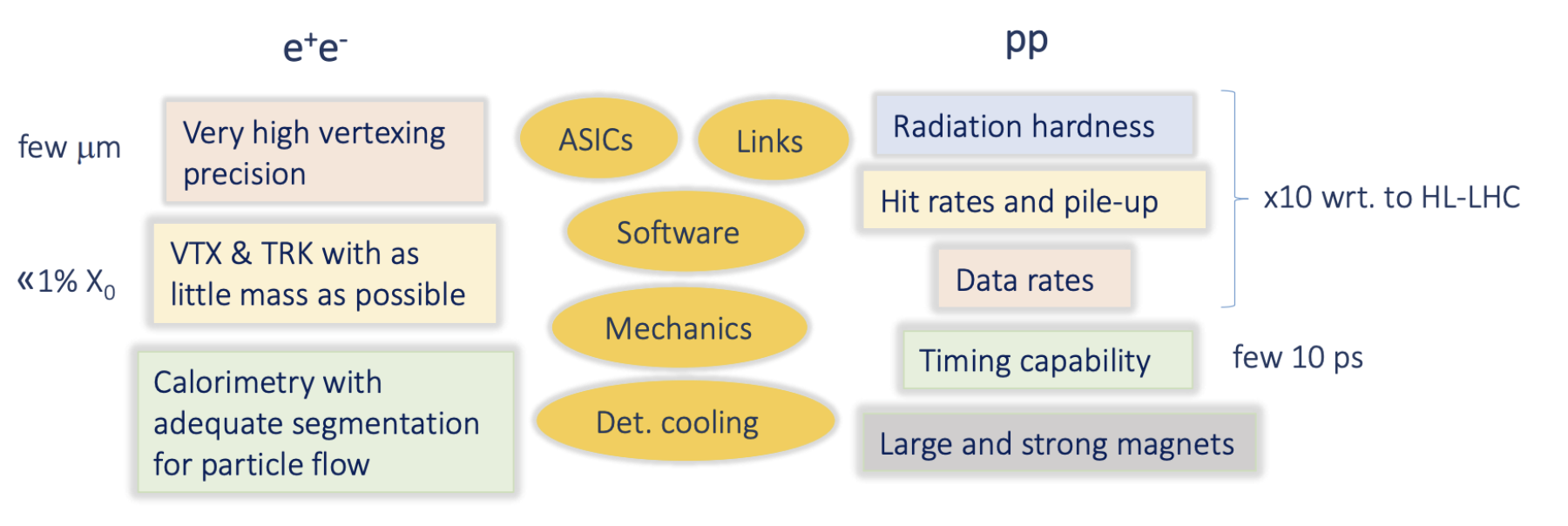Zooming in the EP R&D Days 2022

The annual EP R&D Days meeting was held on the 20th and 21st of June 2022. The meeting reviewed progress and plans of the 11 work packages as the EP RnD programme reaches its midpoint. In addition, the meeting offered better understanding of the respective needs and potential for cooperation in line with the ongoing R&D efforts of the FCC Feasibility Study. A wealth of technologies developed in the framework of the EP R&D programme should be excellent stepping stones. At the core of the R&D programme lie efforts on detector technologies but equally important are the challenges related to mechanics, infrastructure, electronics, software and detector magnets for future experiments.
The EP R&D program is strategic in the sense that it aims at developing those key detector technologies that will be needed for the next generation of experiments. The results of these R&D activities shall be building blocks, demonstrators and prototypes that will enable future projects to develop and build optimal detectors.

Instrumentation challenges in future detectors (beyond HL-LHC)
From a global CERN perspective, the completion of the HL-LHC project scheduled for the LS3 (currently planned from 2026 to 2028) and the exploitation of its results remains a priority. Moreover, the 2020 update of the European strategy for particle physics has identified an electron-positron Higgs factory as the highest-priority next collider. In his plenary talk, Mogens Dam from the Niels Bohr Institute, summarised the experimental challenges of the FCC-ee and discussed the different choices explored for the FCC-ee experiments. For the longer term, a proton-proton collider at the highest achievable energy (at least 100 TeV) is the goal, and the electron-positron collider could be a first stage for this machine. In addition to the accelerator R&D to prove the technical and financial feasibility of this future circular collider, the European strategy update document also clearly highlights the need to keep a strong focus on instrumentation and state-of-the-art infrastructures. Instrumentation remains a key ingredient for progress in experimental high energy physics.
Towards the end of 2021, the EP R&D program reached a workforce of 27 fellows and 17 technical and doctoral students. 30 staff members spend a fraction of their time as work package leader, deputy or supervisor, adding up to about 7 FTE. The program profits from additional doctoral students who are entirely funded through the German Gentner or the Austrian PhD programs. Several EP R&D work packages have defined shared posts with the EU financed AIDAinnova Research Infrastructure project that kicked off in April 2021. As demonstrated during the EP RnD days, the cooperation and exchange with other groups is highly beneficial for both sides. Starting from December’s issue of the EP newsletter, we plan to focus on the ongoing efforts and achievements of the individual Was of the EP RnD programme.
In brief, the 2022 EP RnD days offered the space to discuss and agree on a 5-year forward projection of the EP R&D work plan for the years 2024 – 2028. The programme update shall be in line with the ECFA roadmap program as well as with CERN’s specific needs and priorities, continuing the bottom-up approach that has been established over the past year. This process should also lead to a new budget estimate to be proposed for CERN’s Medium Term Plan exercise in spring 2023.
